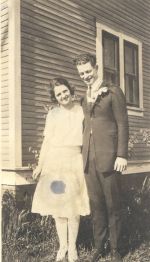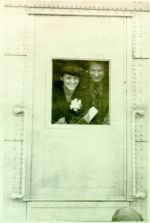
Introduction
Linus Pauling’s life spanned ninety-three years, during which he became both a famed chemist and a noted social activist. This combination of scientific research and public activism was rare enough to be suspect during Pauling’s career, and it remains uncommon now.
Pauling, who was born in Oregon in 1901 and spent most of his career at the California Institute of Technology, won two Nobel prizes. One was his prize in chemistry for fundamental work in elucidating the nature of the chemical bond and the relationship of molecular structure to chemical function. The other was his prize for peace, in recognition of his years of campaigning against nuclear weapons and against war itself.
In addition to this double achievement, Pauling turned medicine in a new direction through his identification of the molecular basis of disease in the case of sickle cell anemia. His orthomolecular theory of health – that micronutrients, vitamins in particular, can promote health by affecting body functioning at the molecular level – has now become part of general wisdom, although his specific claims for the virtues of vitamin C remain highly controversial and, in the opinion of some scientists, even cast a shadow over his scientific reputation. Investigations into this area, however, continue, aided by sophisticated technologies that were not available to Pauling. This may prove to be yet another area in which Pauling made an intellectual leap over limited empirical data to a fundamental grasp of chemical interactions.

Linus Pauling and Ava Helen Miller, Oregon Agricultural College graduation day, 1922.
LP Photographs, 1922i.20
Linus Pauling enjoyed the companionship of a marriage that lasted from his days in graduate school until the death of his wife, Ava Helen, nearly sixty years later. She was the earliest and most lasting influence towards peace activism in Linus’ life, and was herself active in promoting the cause of world peace. The Paulings had four children – three boys and a girl. Pauling once said in an interview, "You know, I don’t know my children and my grandchildren and my great grandchildren well enough to know what effect having me for a father or a grandfather or a great grandfather has on their lives." (Dr. Linus Pauling interview at http://www.achievement.org/autodoc/page/pau0int-9)
Pauling’s life and work is interesting as an example of how the scientist functions in society – as a scientist, as a public figure, as a person with intimate relationships or without them. Successful scientific careers demand a level of commitment and of reputation for objectivity that is almost inevitably at odds with close family life and high-profile public involvement. Pauling cannot stand as a typical example for a scientific career, for his accomplishments are too great. But as a major figure, he brings some issues into high relief. Especially, he may provide an example of the range of freedom given to the scientist to exercise creativity, and of the constraints on this creativity when it is judged to go out of bounds.
This reading curriculum is meant to give the reader an introduction to Pauling’s scientific work and also to provide a brief look at some of the personal and political aspects of his life. As the collection is so immense, the reading material suggested is highly selective. There is no need to be restricted to the materials outlined here.

Ava Helen and Linus Pauling peeking through a train window, Los Angeles, 1938.
LP Photographs, 1938i.6
Table of Contents
- Introduction
- Ways to Approach the Curriculum
- Using Archival Materials in Special Collections
- Early Years: Education, Teaching and the Chemical Bond
- Middle Years: War Work, Peace Work and Protein Structure
- Later Years: Molecular Disease and Orthomolecular Medicine
- Topical Readings
- Websites Regarding Linus Pauling
- Appendix: General Guidelines for Use of Special Collections Materials
- Acknowledgements

